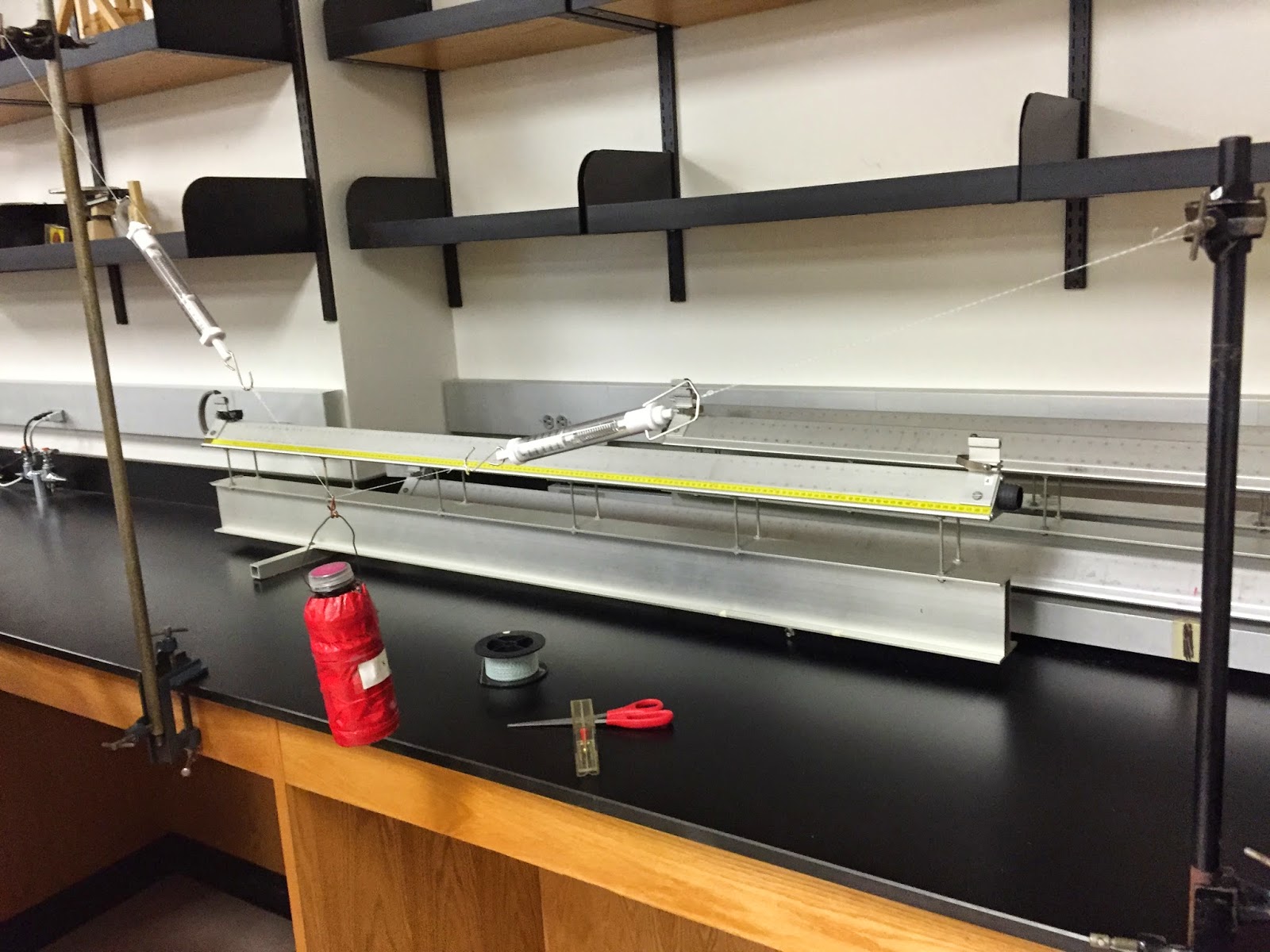In this lab, we were given a small cylinder of aluminum, steel and copper (seen below). We were then asked to take measurements and find out what the density of each was using a pair of calipers (seen below).
Each measurement had a value of uncertainty due to the precision of the calipers which was 1 millimeter. In order to find the uncertainty value for density, we need to take the partial derivative of the formula for density with respect to each individual variable of mass, diameter and height (example below). When you take the derivative with respect to one of these variables, the derivative of the variable is equal to the uncertainty in the value.
Our densities were Aluminum=2.74g/cm^3 with uncertainty=0.050g/cm^3, Steel=7.60g/cm^3 with uncertainty=0.178g/cm^3 and Copper=9.06g/cm^3 with uncertainty=0.178g/cm^3.
The next part of the lab was to find the mass of two unknown hanging objects by measuring the force applied on each string from the spring scale and the angle made on the string (see below). To measure the angle, I used an app on my phone which measures to a tenth of a degree. You also have to be mindful of the fact that the uncertainty for the angles needs to be in radians so simply multiply the uncertainty by the ratio 2pi/360degrees. The uncertainty for the angles turned out to be 0.0017rad. There were three stations and I chose to measure stations 2 and 3. After taking partial derivatives of tensions one and two and angles one and two, I arrived at my answers of m=0.76kg with uncertainty=0.061kg for station 2 and m=0.94kg with uncertainty=0.05kg for station 3.






No comments:
Post a Comment